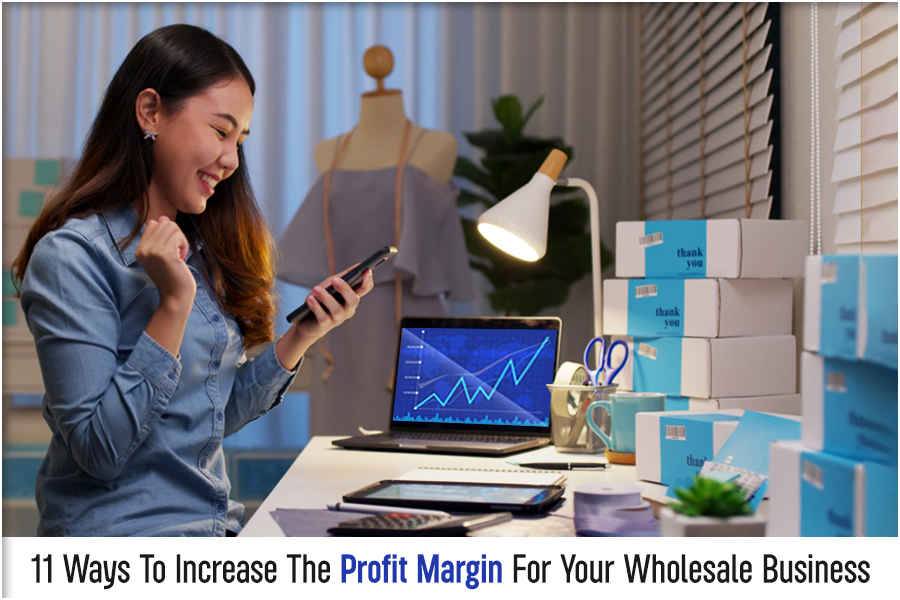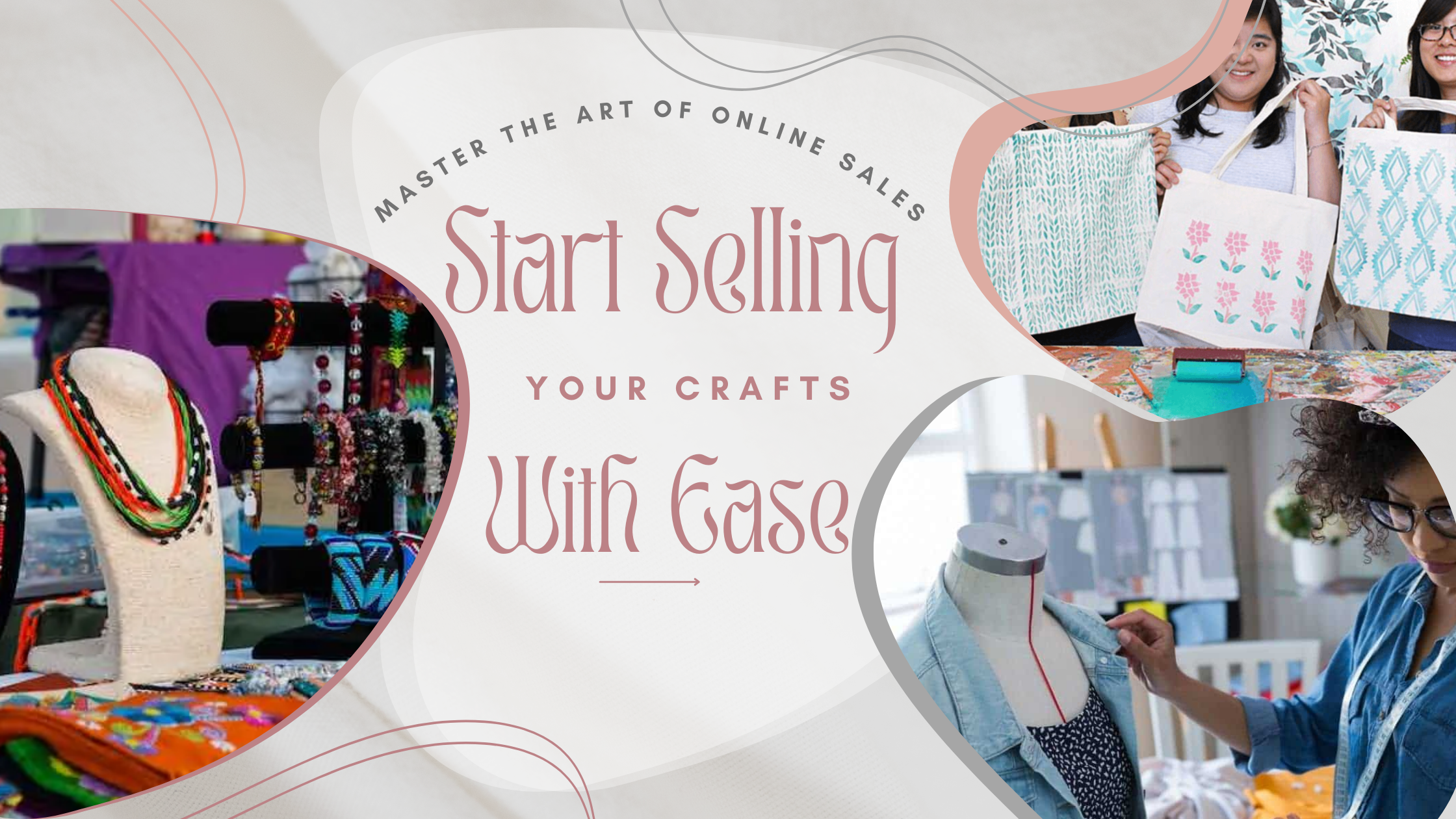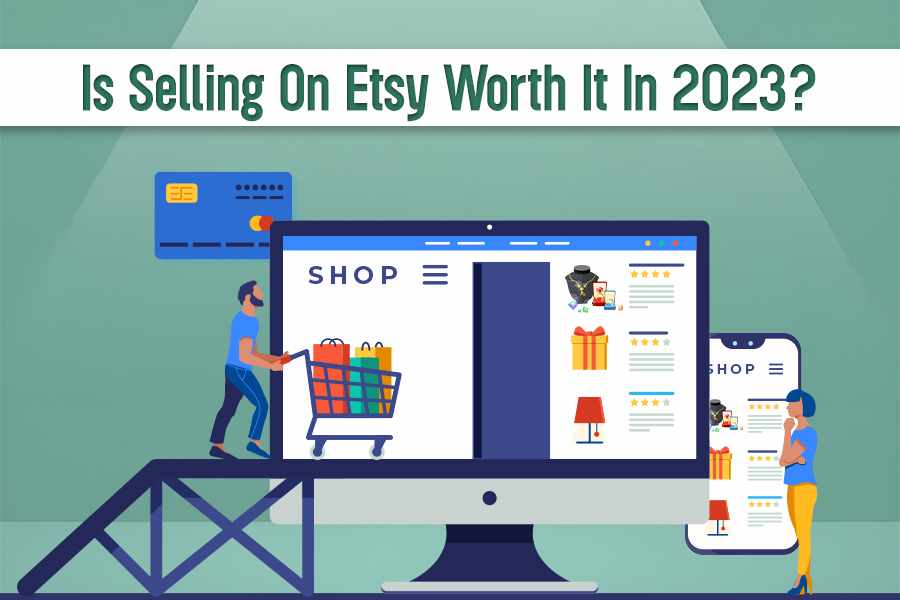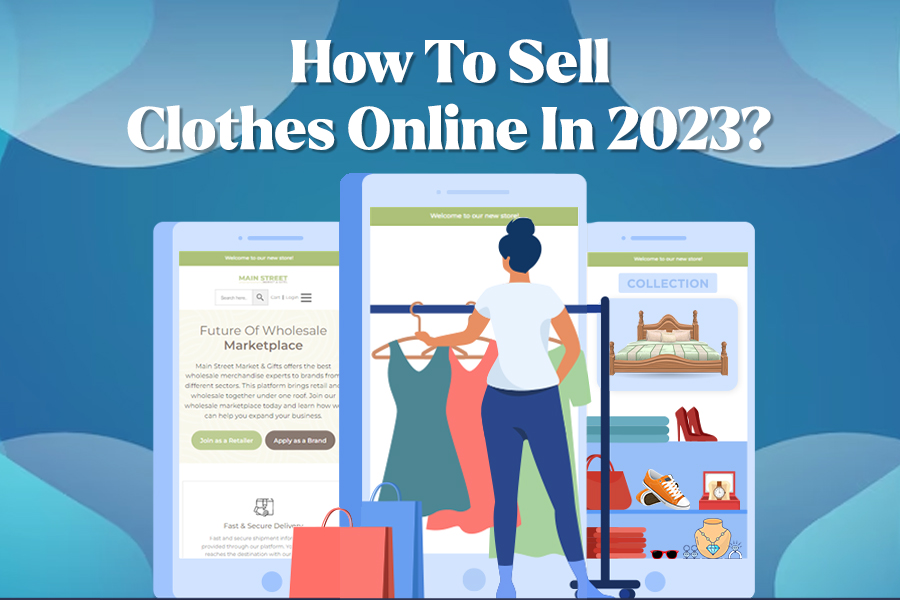Wholesale business thrives in the dynamic landscape with fierce competition and evolving market dynamics. Today, entrepreneurs require to find golden keys to flourish in this sector.
A pivotal factor in achieving this success lies in increased profit margins. The pursuit of higher profit margins remains a universal goal.
Therefore we delve deep into profitable wholesale business strategies in this blog. Our eleven time-tested and innovative approaches will change profit margin. By adopting these proven methods, you can pave the way for sustainable growth, increased profitability, and a stronghold in the wholesale market.
Let’s enlighten you on how to increase profit margins in the wholesale business. Unravel the secrets of turning your wholesale venture into a flourishing empire.
Read ahead!
Understanding Types Of Profit Margins
Let us understand a few basics before knowing how to increase gross profit margins. You should know that understanding and effectively managing profit margins is the bedrock of sustained success.
Profit margins are crucial financial metrics for wholesale venture health and longevity, highlighting competence and success. By definition, it represents how much money the company produces per unit. They provide valuable insights into financial performance and health.
In this section, we will define the three primary types of profit margins– Gross Profit Margin, Operating Profit Margin, and Net Profit Margin.
-
Gross Profit Margin:
Gross Profit Margin represents the percentage of revenue that exceeds the cost of goods sold (COGS). It provides a picture of the profitability of your products before factoring in other operating expenses. The formula to calculate it is:
Gross Profit Margin= (Revenue−COGS) x 100
For instance, if your wholesale business generates $100,000 in revenue and the cost of goods sold is $70,000, your Gross Profit Margin would be-
Gross Profit Margin= (100,000−70,000100,000) x 100=30%
-
Operating Profit Margin:
Operating Profit Margin delves deeper by considering COGS and other operating expenses like marketing, rent, utilities, and salaries. It provides insights into your operational efficiency. The formula for Operating Profit Margin is:
Operating Profit Margin= (Operating Profit Revenue)x 100
Suppose your wholesale business has an operating profit of $20,000 on revenue of $100,000. The Operating Profit Margin would be:
Operating Profit Margin= (20,000100,000)x 100=20%
-
Net Profit Margin:
Net Profit Margin takes into account all expenses, including taxes and interest. It offers a comprehensive view of your overall profitability. The formula for Net Profit Margin is:
Net Profit Margin= (Net Profit Revenue)x 100
If your wholesale business generates a net profit of $15,000 on revenue of $100,000, your Net Profit Margin would be:
Net Profit Margin= (15,000100,000)x 100=15%
Different Pricing Strategies To Maximize Your Profits
At the heart of a thriving business lies a well-crafted pricing strategy. Pricing strategies do businesses a lot of favor. They serve as your compass to let you know how to increase profit margins.
A pricing strategy is a comprehensive analysis of internal and external factors. It provides a logical framework to arrive at the perfect cost per unit. By a systematic approach, you bypass biases that may cloud your judgment and elevate the value of market research.
Crafting a stellar pricing policy is like laying the cornerstone of a profit-driven empire. Yet, its implication extends beyond initial gains- it’s a steadfast companion for sustained growth. While scanning varied pricing approaches, you gain engineering success, capture market dynamics, and put companies on a path to wealth.
We have listed a few pricing plans that may suit your wholesale business-
-
Cost-plus pricing:
This method involves calculating the total cost of producing a product and adding a predetermined profit margin. It offers simplicity and transparency, ensuring that each sale covers direct costs and a desired profit. While clear-cut, regularly reconsider your cost structures to maintain profitability.
A subcategory of such pricing method is the Keystone pricing. It always doubles product costs and is a popular method to use.
In our experience, this approach is a simple way for merchants to streamline and automate their prices. It should boost revenues in big or small businesses with huge inventory. Additionally, it ensures that every transaction will increase your profit margin comfortably.
However, a word of caution- Such a tactic falls short when labor accounting or other variables. Additionally, it’s not the ideal option for businesses offering digital goods or services.
-
Value pricing:
Value-based pricing focuses on the perceived worth of the product to customers. Understanding market value allows for setting unique prices reflecting benefits and justifying premiums for wholesale businesses.
Effective communication of this value proposition is the key to successfully executing this technique.
The perceived product value can change by factors such as economic situations, changes in reputation, or shifts in available products.
Value pricing remains great for year-round demand. Though still causing price and profit fluctuations, It offers flexibility and customer satisfaction as priorities over production costs.
-
Penetration pricing:
Ideal for entering competitive markets, penetration pricing involves setting a lower price at the initial stages. This strategy aims to attract a large customer base and gain a foothold in the industry. As you establish your wholesale business, gradual price increases can follow.
To increase profit margins, such pricing plans can help startups and small wholesale businesses attract customers and increase sales. This approach can be risky but draws in potential customers who might overlook the product otherwise.
Penetration pricing starts with lower prices to attract more customers, unlike illegal loss leader pricing, which can lead to monopolies.
-
Price skimming:
Price skimming is a strategy that starts with a high initial price and gradually decreases. It targets early adopters and trendsetters. This strategy can sell new products, create a buzz, and build customer loyalty.
Notably seen in smartphone businesses, it allows quick cost recovery and suits industries driven by trends or high production costs. However, it is not for high initial cost-based professional or subscription-based services.
-
Bundle pricing:
Bundle pricing is a savvy strategy that involves creating packages of related products offered at a slight discount compared to individual purchasing. This approach entices customers with perceived value, cultivates loyalty, and encourages repeat business. It is a great way to increase profit margins.
For instance, consider a wholesale business selling dog food and bowls, offering both for $25 instead of $30. It becomes a compelling offer.
Bundle pricing offers more value by combining travel components, and salon products, improving the general experience. Utilizing this tactic strengthens the bond with your promotions and encourages customers to spend more on each visit.
-
Premium pricing:
Adopting a premium pricing strategy can serve you well when your target audience predominantly consists of affluent consumers. Differentiate your wholesale business from competitors and avoid severe cuts to create a unique identity.
Premium pricing reinforces your brand as a prestigious name. It fosters the notion of superior quality. Consider this- Do people need to buy expensive pain relievers like Tylenol and Advil when generic versions work just as well?
For premium pricing to thrive, your customer base must welcome and adopt higher price points. If implemented judiciously, it can swiftly heighten the perceived value of your products. It will be one way how to increase the gross profit margin in a wholesale business.
-
Competitive Pricing:
In a wholesale business, when targeting price-sensitive customers, consider competitive pricing. You can maintain prices below your rivals’. Businesses like Best Buy and Target offer price match to gain customers’ loyalty during sales.
Frequently coupled with economy pricing, it prioritizes minimizing production costs to deliver optimal affordability.
Though exclusivity isn’t the aim, competitive pricing appeals to customers seeking dependable affordability.
-
Psychological pricing:
Psychological pricing affects how people perceive the cost of your products/services. This strategy utilizes price points such as $9.99 instead of $10 to create the perception of a lower cost. It taps into consumer behavior and encourages impulse buying. This pricing is a great way to increase profit margins successfully.
As you explore these diverse pricing plans, remember that the right strategy depends on your product, target market, and business goals. A thoughtful analysis of your competitors will guide you toward the optimal pricing approach. It will increase profit margins and fortify your brand’s position in the wholesale market.
How To Increase The Profit Margin of a Wholesale Business?
Money is essential for growth and prosperity no matter what work we do. In the case of businesses, profit margin is what matters to thrive. Not just in wholesale but any business, the higher profit margins stand as a paramount goal. To flourish in this competitive world, wholesale entrepreneurs seek innovative and proven methods to enhance their bottom line.
In this section, we discuss several strategic approaches how to increase the profit margin of your wholesale business:
1. Minimize Discounts and Enhance Inventory Management:
Simply put, markdowns are profit-killers for wholesale businesses- we say this from experience. Avoid excessive markdowns by optimizing inventory visibility and management. Efficiently track stock levels to prevent overstocking or stockouts, reducing the need for steep discounts.
You can begin by bettering your wholesale inventory management. A comprehensive understanding of your merchandise, including high-velocity and slower-moving items, is essential. It empowers informed decisions. It fosters increased product turnover and reduces the necessity for markdowns.
An effective approach to increase profit margins, with additional advantages, involves attaining full transparency in your inventory. This strategic measure serves to curtail markdowns. It then safeguards margin integrity. Zara has used this method impressively.
Furthermore, harnessing the potential of a proficient Product Information Management (PIM) system presents an avenue to augment margins. So by taking these into account, you will learn how to increase profit margin in business.
Keynotes:
- Enhance wholesale inventory management practices by honing data accuracy and ensuring real-time awareness of stock levels and product performance.
- Leverage inventory insights to drive informed decisions spanning procurement, sales, and targeted marketing efforts.
2. Enhance Brand Reputation and Perceived Product Value:
We will explain this with an example. A captivating insight comes from the cosmetic business, where superior profit margins become evident. The revenue generated in this segment is impressive. Why? Beauty brands can create emotional connections with customers, experts say.
This category has a unique bond with consumers. There is a harmonious interplay of value and price, as cosmetics present a sense of self-assurance, nurturing customer loyalty.
This narrative is further inflated by an artful approach, igniting a spirit of exploration similar to the dexterity displayed by off-pricing.
Within this, the profit expands to remarkable heights. Each diminutive product with brand essence, packaging finesse, and strategic marketing holds the potential for substantial profitability.
Keynotes:
- Explore avenues to amplify the perceived worth of your brand, centering on the profound emotional and lifestyle values your merchandise encapsulates. Can your products offer self-assurance and well-being? Do they elevate the tapestry of your clientele’s lifestyles?
- Brands that orchestrate these plans often command a premium for their offerings, basking in the glow of high margins.
3. Optimize Operations for Cost Efficiency:
Another way how to increase profit margins- cost efficiency is your answer. Refining your wholesale business operations creates better cost efficiency, liberating your enterprise from needless expenses. Streamlining processes identifies and eliminates inefficiencies, a vital stride toward increasing savings and boosting good profit margins.
Smart pricing strategies guide workforce optimization, reducing overtime and staffing, and promoting fiscal responsibility. Putting a laser focus on waste reduction and uncovering avenues for expense minimization can also help.
A cornerstone of operational harmony is supply optimization. Transition to a cost-effective solution to consolidate inventory, sales, and marketing, infusing efficiency throughout your wholesale business ecosystem.
Another way is looking into operational finesse. It goes hand-in-hand with automation. A suitable implementation of automation eliminates repetitive tasks to free up time and workforce, thus reducing operating expenses.
Let us remind you- data entry is not the only thing you can automate. These days everything has an app to keep things running smoothly. This versatile transformation culminates in increased profit margins, attesting to the concrete benefits of operational refinement.
Key takeaways:
- Cut costs without sacrificing quality.
- Automating tasks simplifies, increases efficiency, and reduces expenses.
4. Boost Average Order Value Strategically:
If you are starting a wholesale business, implement strategic maneuvers to augment the average value of every wholesale order. It is a compelling avenue to increase profit margins. Having successfully attracted clientele to your establishment, capitalize on the opportunity to optimize their expenditure. Use techniques such as upselling, bundling, or presenting complementary items, culminating in elevated transaction sums.
For instance, consider a wholesale electronics distributor. Alongside their core product, they can offer related accessories packaged strategically with their product for a complete solution.
Customers may elevate their order value, thus increasing profit margins by presenting these bundles as value-enhancing propositions.
Keynotes:
- Increase average order value through suggestive selling.
- Be careful about distribution value by finding the most sold products.
5. Refine Procurement Strategies:
Improve the profitability of your wholesale business by refining your procurement strategies. You can implement intelligent purchasing practices aimed at more favorable terms from suppliers.
Try to engage in skillful negotiation to unlock advantageous arrangements. Delve into bulk discounts and good customer servicing to capitalize on economies of scale and strategically source materials to ensure optimal cost-efficiency.
Imagine a wholesale clothes distributor looking to increase its profit margin. They obtain lower material prices and longer terms for payment by tactfully haggling with fabric vendors. Simultaneously, they explore bulk purchasing of popular items, leveraging the increased order volume to secure powerful discounts.
Through these strategic maneuvers, the distributor reduces expenses and elevates the overall profitability of their wholesale operations.
Keynotes:
- Negotiate effectively, take advantage of economies of scale by offering bulk discounts, and choose your supplies wisely to maximize savings.
- Intelligent purchasing practices secure favorable supplier terms.
Read More:
How To Buy Wholesale Clothing | All You Need To Know in 2023
6. Strategic Price Adjustments:
Explore the idea of adjusting your prices strategically to match the true value of your wholesale products. Raising prices slowly and justifiably can increase profit margins by strengthening your general financial position. While the perception of higher prices might worry you about losing customers, it can help you earn more money.
Deciding on prices requires a personalized approach. It should consider your wholesale business’s unique features, like the products you offer, how to increase profit margins and the customers you serve.
Although there are no set rules for pricing, carefully analyzing your business data can help you find the best pricing balance.
In addition to basic factors like costs and profits, consider external factors like what your competitors charge, the state of the economy, and how sensitive your customers are to prices. Focus on building customer relationships based on product value, not just the price.
Surprisingly, many consumers care more about a good customer experience than the lowest price. It means there’s a significant market for pricing that emphasizes value.
A wise approach involves studying, planning, and gradually adjusting prices on some products to see how customers react and how sales perform. If this experimentation goes well, you can roll out price adjustments across all your wholesale products.
Keynotes:
- Go for value-driven pricing after doing a comprehensive analysis.
- Create a personalized approach- it will give you a suitable pricing balance.
- Make incremental adjustments and monitor reactions. If successful, consider extending these adjustments to your entire wholesale product range.
7. Strengthen Vendor Relationships:
Your vendor is your savior. It is true when we say it! Fostering strong and collaborative relationships with your suppliers enhances your wholesale business’s profit margins significantly. The bottom line is strong vendor relationships lead to better pricing, conditions, and smoother supply chain operations. It ultimately improves a company’s financial health.
You can negotiate better deals, price increases or decreases, explore bulk discounts, and gain access to exclusive offers by building trust. Strong vendor partnerships lead to efficient order fulfillment, timely deliveries, and fewer inventory shortages. It helps prevent costly interruptions to business operations.
Consider working closely with your key suppliers to align goals and strategies. It will ensure a mutually beneficial partnership that propels both your businesses forward. The ripple effects of strengthened vendor relationships extend beyond immediate financial gains, enabling a more resilient and profitable wholesale enterprise.
Keynotes:
- Have a mutual association with dealers. Engage in joint business planning and figure out how you can improve profitability.
- Identify inefficiencies in your supply chain and find ways to reduce them.
8. Inspire and Motivate Staff:
Might we suggest you inspire and motivate your staff? It will uplift the output of your existing workforce and be a powerful avenue to increase profit margins. Recognize your staff’s potential for productivity. It’s within your purview to harness their capabilities.
Empower your team to excel and contribute significantly to elevated sales and operational effectiveness. When employees feel confident they amplify customer service quality and overall profitability delivering a positive impact.
Harvard Business Review studies show businesses can reclaim over 20% of productive capacity by addressing organizational inefficiencies.
Following process optimization, focus on inspiring and training your team to unleash their potential. While there isn’t a one-size-fits-all approach, several strategies can empower your wholesale staff-
- Strategic Goal Setting: Establish well-aligned sales targets and foster a culture of motivation, encouraging your team to surpass these objectives.
Character Development- Identify traits of successful wholesale associates and nurture these attributes within your staff to enhance their performance. - Effective Hiring and Training: Implement proven retail hiring and training methodologies to elevate performance, enhance sales, and foster exceptional customer service.
- Overcoming Selling Apprehensions: Address any reluctance towards selling, guiding them to confidently engage in sales interactions.
Art of Suggestive Selling- Educate your staff on the nuances of suggestive selling, allowing them to enhance transaction values through subtle recommendations. - Mastering Upselling and Cross-Selling: Provide comprehensive training on upselling and cross-selling techniques, enabling your staff to optimize each customer interaction.
- Crafting First Impressions: Equip your team with skills to create impactful initial interactions with customers, setting the stage for positive rapport and potential sales.
Key takeaways:
- You could lose staff efficiency leading to less profits.
- Stop that by the reformation of procedures..
9. Optimize Efficiency by Minimizing Waste:
Another way how to increase profit margins is- Efficiently manage resources and minimize wastage within your wholesale business. Adopt principles akin to lean manufacturing, which identify eight types of waste, can be adapted to streamline operations in the wholesale realm.
Summarized as “D-O-W-N-T-I-M-E,” these wastes encompass:
D – Defects: Addressing issues leading to defective products through rigorous quality control measures.
O – Overproduction: Avoiding excessive ordering or manufacturing beyond actual demand to prevent surplus inventory.
W – Waiting: Mitigating unplanned downtime, unbalanced workloads, and unnecessary delays.
N – Not utilizing talent: Fully harnessing your team’s skills and potential, ensuring they are aligned with the right tasks.
T – Transportation: Minimizing needless movement of products, such as inefficient shipping or inter-store transfers.
I – Inventory excess: Manage surplus or dead stock, optimizing inventory levels to match demand.
M – Motion waste: Optimizing store layout and minimizing unnecessary staff movement.
E – Excess processing: Reducing the need to process, return, or repair products that do not meet customer needs.
Keynote:
Examine each element separately to determine how it relates to your company. Find solutions to lessen these wastes if they are present.
10. Maximize Sales from Existing Clients:
Unveil a potent avenue to increase your profit margin for wholesale business by harnessing the potential of your current clients. Extensive research underscores the profitability of selling to existing customers compared to acquiring new ones.
Therefore, it becomes vital to give attention to expanding your current customer base.
You can direct your efforts towards mining improved value from your existing clients. Trust us, it will work wonders. Try using strategic measures like cross-selling, tailored offers, and exceptional service to motivate recurring purchases.
Doing so cultivates lasting relationships, and personalized experiences boost loyalty, revenue, and profit margins.
Keynote:
- Research your existing clients and customers to increase your profit margin by manifolds.
- Personalized experiences enhance loyalty, revenue, and profit margins.
11. Discount With Caution:
When considering discounts, exercise caution to safeguard profit margins. Tailored offers can be more effective than sweeping, one-size-fits-all discounts. Recognize that reactions vary in responsiveness to discounts. Some require substantial incentives, while others need minimal persuasion.
You should avoid undermining profitability by personalizing discount levels based on individual customer needs. Instead of broad discounting, leverage customer purchase histories to craft customized offers aligned with their preferences. This personalized approach will surely increase profit margins in the wholesale business.
Moreover, timing is crucial. Time discounts strategically during peak buying periods or product launches to increase customer receptivity. Additionally, ensure discounts do not compromise the fundamental profitability of your wholesale operations.
Keynotes:
- Customize promotions to avoid overextending discounts.
- Experiment with various promotional strategies to pinpoint those that genuinely contribute to your profitability.
Measuring and Monitoring Profitability
To increase profit margins, measuring and monitoring profitability is essential. Key profitability indicators, including gross profit margin, operating profit margin, and net profit margin, offer invaluable insights into a company’s financial performance, enabling proactive strategies for growth.
By vigilantly tracking these metrics, organizations can swiftly identify emerging trends, potential challenges, and avenues for enhancement. For instance, a declining gross margin may illuminate escalating costs or pricing shifts, prompting the adoption of cost-reduction tactics or pricing adjustments. Similarly, consistently monitoring the operating profit margin unveils operational efficiencies or areas needing optimization.
Advanced analytical tools further refine this process by diving deep into specific business aspects—such as departments, product lines, or customer segments—providing granular insights. Continuous measurement and monitoring improve businesses’ profitability.
How Do You Calculate The Wholesale Price?
Shifting from retail to wholesale can pose challenges when finding the appropriate price. Extra expenses may make a retail price that appears lucrative unsuitable for wholesale businesses.
The widespread method to calculate the wholesale price is by halving your retail price. Ideally, your costs should only make up a quarter of your retail price, but this can be tricky to achieve. Some costs include ongoing expenses and the materials used to make your products.
Try the absorption pricing method if the 50% approach doesn’t give you good profit margins. It helps you find the right Recommended Retail Price (RRP) and wholesale price.
How To Change The Prices Without Losing Or Upsetting Customers?
It’s essential to ensure your business remains profitable and competitive. Want to know how to increase gross profit margin from the wholesale marketplace? Changing prices can do wonders. It can change your revenues generated. But it’s a delicate balancing act. You cannot lose or upset your customers. But how does one do it?
However, it is equally necessary to retain the trust and loyalty of your valued customers.
We’ll explore two strategic approaches—honesty and transparency and inventory refreshment—that can help you make price adjustments without losing or upsetting your customers.
-
Be transparent:
Communication is the cornerstone of any successful customer relationship, especially for pricing changes. When you’re contemplating a price adjustment, it’s paramount to be forthright with your customers.
Do not let your clients believe you are raising prices for an increased profit margin.
Instead, summarize your expenses and how they have changed over time. Finally, you must increase your pricing to keep presenting your clients with high-quality items, so be honest with them.
-
Refresh your inventory:
There is no harm in bringing a few business changes. We say this from our experiences. One effective way to introduce price changes is by giving your inventory a refreshing makeover.
It can involve introducing new product variations, enhanced features, or even bundling options. In this way, you create a positive distraction from the price change itself.
Making Way For A Booming Wholesale Business
Know how to increase gross profit margin in retail by enhancing your wholesale enterprise’s profitability, and a comprehensive grasp of the wholesale landscape. It is vital to prioritize key factors like target demographic, supplier research, client relationships, pricing strategy, etc.
Main Street Market & Gifts stands ready to provide invaluable assistance for those keen on embarking upon a wholesale venture. We serve as a cornerstone for establishing a solid groundwork. Our platform caters to wholesale novices and enterprises.
Initiate your wholesale journey with Main Street Market & Gifts, offering a curated selection of products. Remember, aligning with prevailing trends and adeptly navigating shifts in your competitive market is vital. If uncertainties persist or you seek guidance to inaugurate your wholesale enterprise, Main Street Markets & Gifts remains your steadfast ally. We provide strategic pricing, practice targeted marketing, symbiotic supplier partnership, and more.
As a distinguished online marketplace, we seamlessly converge wholesale enterprises and retailers. Unveil the peak of accomplishments through us.


![Selling Crafts Online [A Step-by-Step Guide]](https://msmarketngifts.com/wp-content/uploads/2023/04/MS-blog-banner-2.jpg)






